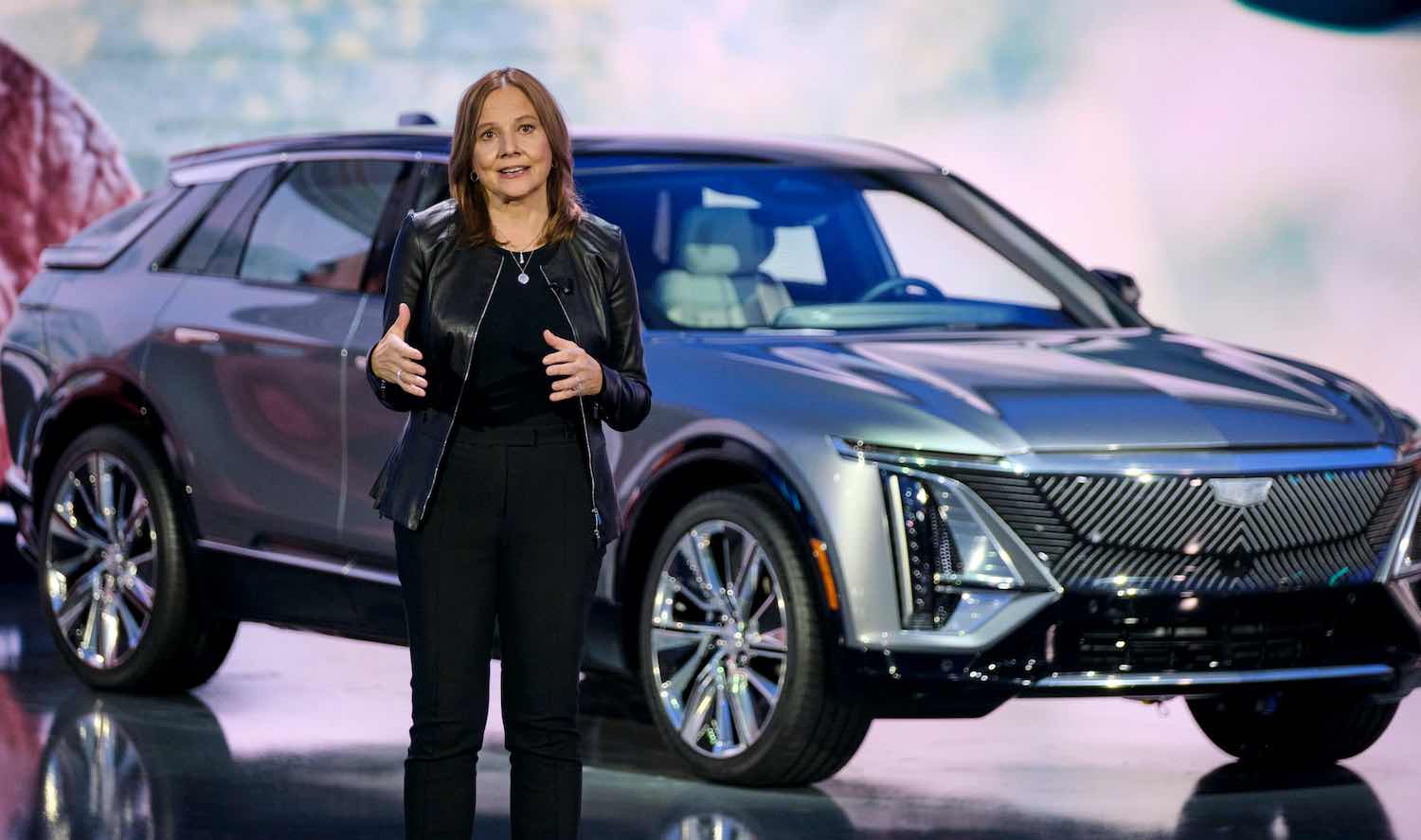ImpactAlpha, Oct. 7 – GM will double its revenues by 2030 as it rolls out dozens of electric cars, trucks and delivery cars in the coming years. The goal: To be the No. 1 U.S. EV maker. Ford is investing $7 billion to build three U.S. plants to churn out electric batteries and pickup trucks, the largest investment in its 118-year old history.
Once laggards, U.S. automakers are racing to embrace the all-electric future – and Tesla-like valuations.
Electrification, along with software-based services and autonomous driving technology, will transform GM “from automaker to platform innovator,” said GM chief Mary Barra at the company’s investor day on Wednesday. One believer: the hedge fund Engine No. 1, which has taken a roughly $22 million stake in the carmaker and backed Barra’s vision.
Like fossil fuels, “the internal combustion engine is also reaching the end of its era,” reads a white paper prepared by the hedge fund, which made a name by getting three insurgents elected to Exxon Mobil’s board. Unlike Exxon, “GM has gone all in” on the energy transition, Engine No. 1’s Chris James told CNBC.
“We think that with the right management team, with the right investments… they can go in and disrupt the industry and be successful during this transition,” said James.
Chip shortage?
Automakers from GM to Honda saw sales slump last quarter, which they blamed on an industry wide chip shortage. ARK’s Cathy Wood has another explanation: slowing demand for gas-powered cars. She points to Tesla’s record setting Q3 sales of more than 241,000 vehicles, a 73% jump from a year ago – and the fact that EVs require up to 5 times as many chips than their conventional “ICE” peers.
Climate leader
By 2025, GM plans to roll out more than 30 electric models, including a $30,000 compact SUV, and reach sales of 1 million EVs a year. Bara also cited the company’s $25 million Climate Equity Fund to help close equity gaps in the energy, and the company’s anchor partnership with Breakthrough Energy Catalyst to scale critical decarbonization technologies like hydrogen and biofuels.
Green jobs
Both GM and Ford are scrambling to rebuild domestic supply chains. The first of four U.S. battery production facilities planned by GM is expected to come online next year in Lordstown, Ohio. Ford expects its new battery and EV plants in Kentucky and Tennessee to create 11,000 jobs over the next four years. GM has hired 8,000 employees this year, many for new digital tech roles, said Barra.











